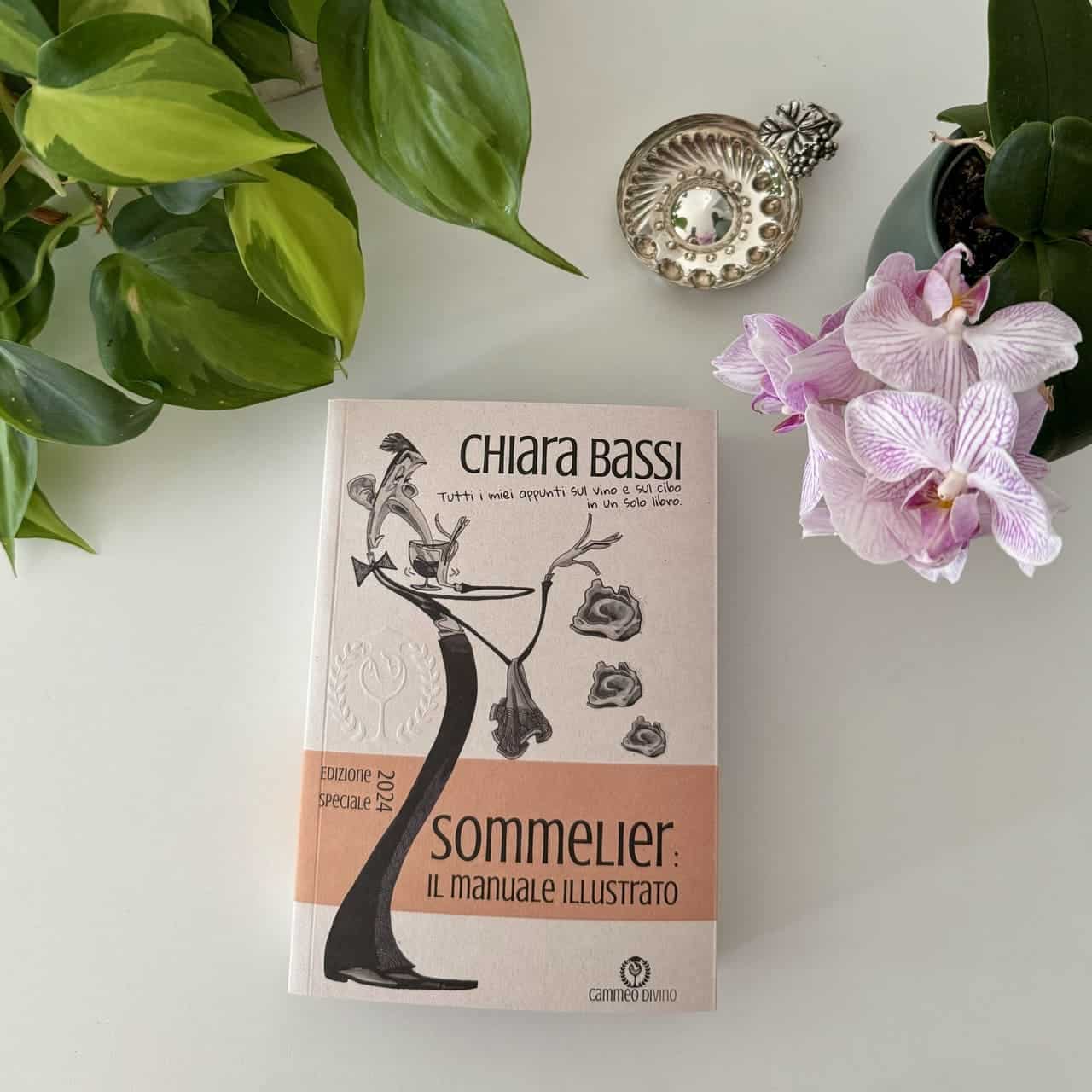In this guide, hopefully as comprehensive as possible, I want to help you get to know the name of glasses for the different types of spirits. Based on the assumption that there are so many different glasses and that you reasonably cannot buy them all, if only for reasons of space, I will try to fit the various types of wine, beer and spirits into 'just' 15 types. For issue 1 of the January 2020 print magazine 'CosediCasa', I had already helped journalist Alma Dainesi identify the glasses indispensable for enjoying a good glass of wine. Today I have decided to extend this discourse already started to two products that commonly enter our homes: the beer and the distillates.
Name alcoholic beverages: let's try to streamline...
Wine, beer, spirits, cocktails... the possibilities when it comes to glasses are much broader than I am about to describe. Moreover, choosing the right glass allows you to best savour the liquid it contains. If you don't believe us, try drinking the same wine in a universal tulip goblet or in a stemless water glass (like this tumbler) and then taste the difference yourself! My aim today is not to show you all human knowledge about glasses, goblets, cups! I would like to give you the opportunity to choose from these macro-types I am presenting 4/5 types of glasses to buy so that you can enjoy the spirits you drink most frequently. That is why I have grouped wines, beers, spirits and cocktails within the same type of glass. I have also made you a small selection of glasses that I like and that you can conveniently buy on Amazon, 2 in each category. If you have other glasses to recommend to me or want advice on which glasses to use, scroll down the page and leave me a comment.
1) Charmat method sparkling wines, dry beers with abundant foam such as pils, delicate lagers
Flûte glass. I am not a great fan of flutes, but it is also true that I drink few charmat method sparkling wines and lager or pils even fewer. The flûte concentrates the bubbles making them sometimes even unpleasant and is too narrow to appreciate the aromas. For me, buying flutes makes absolutely no senseand then everyone throws their money where they want... of course! My advice is to leave these glasses where they are: for sparkling wines and beers with plenty of foam choose a nice tulip glass, you'll thank me!
2) Young white wines, aromatic beers such as Belgian abbey beers, IPAs or pilsners
Tulip glass. The universal glass par excellence, any liquid here never goes wrong. Its flared shape enhances the aroma of wine and beer, and therefore enhances aromatic wines and beers. It is no coincidence that if you choose a fairly wide one, you can consider it your universal glass. That is to say, if you have 6 of these for me you have 1/3 of the made in glasses theme... but I will write down my choices and advice once I have analysed all the glasses! 😉 The tasting glass is described as follows:
- Base = Serves to hold the glass correctly and firmly
- Stem = Thin and long, it serves both to move the hand away from the goblet (avoiding heating the glass and altering the aromas) and to rotate it easily
- Chalice = Slightly pot-bellied, with a smaller rim diameter than the wider [tulip shape]. Serves to concentrate scents towards the nose.
3) Structured white wines, large sparkling wines, young red wines, red beers
Rhine glass. I really like these glasses in a modern version as I suggested, however I would not buy them because I prefer a slightly wider tulip.
4) Medium-bodied red wines, full-bodied and robust beers (strong ale, double malt...)
Ballon glass. The ballon is a very pot-bellied glass - or very pot-bellied in the case of the grand baloon - and tall, with an opening just below the belly. Its conformation should be designed to better express the aromas while oxygenating the liquid. For beer, it has a large surface area that favours heat exchange and a belly with a close shape that enhances aromas and foam. For wine I don't like it and so I have never used it, but since many consortia still like it I will mention it for the record. For me, however, you can do without buying it, except to use it with beer... but in my opinion, despite what they say, it doesn't enhance that either.
5) Structured and evolved red wines, abbey beers and IGAs
Burgundy glass. A splendid glass that if you have space I absolutely recommend you buy. The Zalto ones, then, are orgasmic! The Burgundy goblet was created to accentuate the nuances of the most expressive and powerful wines by increasing the surface area of the wine and thus allowing it to breathe. This glass is perfect for wines such as Amarone, Barbaresco, Barolo, Brunello, Californian Chardonnay and all Burgundy-style wines.
This glass is also perfect for abbey beers and IGAs (Italian Grape Ale), which are normally characterised by a high alcohol content, great olfactory complexity and strong taste.
6) Sweet and aromatic sparkling wines, particularly aromatic beers
Cup. Famous is the phrase that portrays the perfect woman's breast as the one capable of filling a Champagne glass. But why was the cup traditionally used for Champagne when today it is only reserved for sweet aromatic sparkling wines? Simple: historically, Champagne was a sweet and aromatic wine! Today, Champagne has become a great sparkling wine made from semi-aromatic vines (chardonnay) or non-aromatic vines (pinot noir, pinot meunier...) and therefore cannot be served in the cup to be appreciated. Perfect instead for this type of glass are Moscato d'Asti DOCG, Brachetto d'Acqui DOCG, Colli Piacentini DOC Malvasia Spumante Dolce...
7) Sweet mild wines, dessert wines, delicate and fragrant beers
Sauternes. Its shape is specially designed to bring out the aromas and enhance the acidity of the wine so as to balance its sweetness. I have always loved this glass and I confess that I have one (that very C&S I mentioned!) just for me that I use with my beloved Alsatian wines, but also with Port and Sherry, as well as Sauternes and more generally with passiti and vin santi of all sorts. If you have a little place left over....
8) Alt and weizen beer glasses, alcoholic and non-alcoholic long-drink glasses
The glass for weizen beers widens just before closing to control the abundant foam. Together with the long straight glass for alt beers, it is also perfect for preparing alcoholic (Mojito, John Collins, Ramos Gin Fizz, Cuba Libre, Long Island Ice Tea, Sex on the beach...) and non-alcoholic (San Francisco...) long drinks.
9) Universal beer glass (Märzen, export...)
Mug. The thick glass preserves temperature while the smooth surface highlights the poor perlage. Suitable for Ales, especially Pale Ales.
German mug. The glass is thick to preserve freshness and worked to enhance perlage, while the cylindrical shape gives a neutral effect on the foam. Created for Märzen and Export, it is considered the universal glass.
Moreover, it is perfect for serving Moscow Mule and other cocktails... although - fortunately - it is not made of copper!
10) Whiskey glasses, lots of rum
Glencairn. The ideal whiskey glass that also performs well with the vast majority of rums. It has a wider, taller than standard tulip belly and a thick, high base without a stem. It can, however, be replaced with a nice tulip glass.
Small tumblers were an old fashioned fashion that do not enhance this distillate. If you really want to buy them, put a drop of young schnapps, gin or vodka in them.
11) Young Grappa Glasses, Aged/Barrel Glasses
Not all grappas are the same! I, for example, really appreciate barricaded grappas, while young ones I think are good just for warming up when the temperatures are below zero outside. That is why I am showing you a universal glass, both for young or aromatic grappas and for the nuances of barricades. What grappa do you drink?
12) Cognac glasses, armagnac, calvados, some rums, port, sherry, marsala, madeira, structured and roasted dark beers (stout)
Napoleon / Snifter glass. This for me is absolutely the glass to have, along with the tulip and the burgundy. Indispensable, it lends itself to enhancing spirits, fortified wines, structured and roasted stout-type beers. It can also be used with certain cocktails such as Piña Colada...
13) Vodka and gin glasses
Smooth shot. Two extremes, vodka and gin. The first dry, unscented. The second very rich. Perhaps because for the former there is little to smell and for the latter there is too much, a small shot glass - a shot glass, to be clear - will do just fine. It also takes up little space and you can use it if you like your coffee in glass.
14) Alcoholic and non-alcoholic aperitif glasses
Martini. A sacred and nostalgic glass that is always good for aperitifs! Practically all pre-dinner cocktails are perfect for it, just to name a few: Alexander, Aviation, Boulevardier (a delicious Negroni but cooler), Cosmopolitan, Daiquiri, Espresso Martini, Martini Dry, Porto Flip, White Lady...
Margarita. Both at home in my opinion there is no point in having them, so a choice has to be made: which is your favourite cocktail? For me there is no doubt: absolutely Martini! However, this sombrero is also perfect for non-alcoholic drinks... and as a stand for orchids! I swear, I have two bought for it! 😄
15) Cocktail glasses: moscow mule, julep cupe
Copper mug. I love cocktails served in metal, but here you have to be very very careful. The traditional glass of all 'mules' are made of copper, a metal that reacts with the acidic PH giving an unpleasant metallic taste and - worse - releasing nasty particles that can give us toxic reactions such as diarrhoea, vomiting or stomach ache. In the long run, consuming acidic food stored or cooked in copper can even cause death! La The Food and Drug Administration advises against using copper vessels for this cocktail, which is why I recommend you buy these beautiful mugs because they are very scenic and retain their temperature, but prefer the food-grade stainless steel interior and make the copper just a plating on the outside!
Alcoholic beverages: Final recommendations
Of all this quaqquaraqua of glasses at the end I recommend you buy three. And thank me: those who live with you won't dream of letting you walk on them... 😇😇😈
- Tulip Glasses for universal use in wine and beer
- Napoleon Glasses for dessert wines, fortified wines and spirits
- Martini glasses for alcoholic or non-alcoholic aperitifs that can be served here (I would say most) with the knowledge that all other cocktails are served in the universal
You're more than OK... for the shots, coffee cups are fine, as they are all transparent liquors and that's the size...
Cheers 🍷
Chiara


